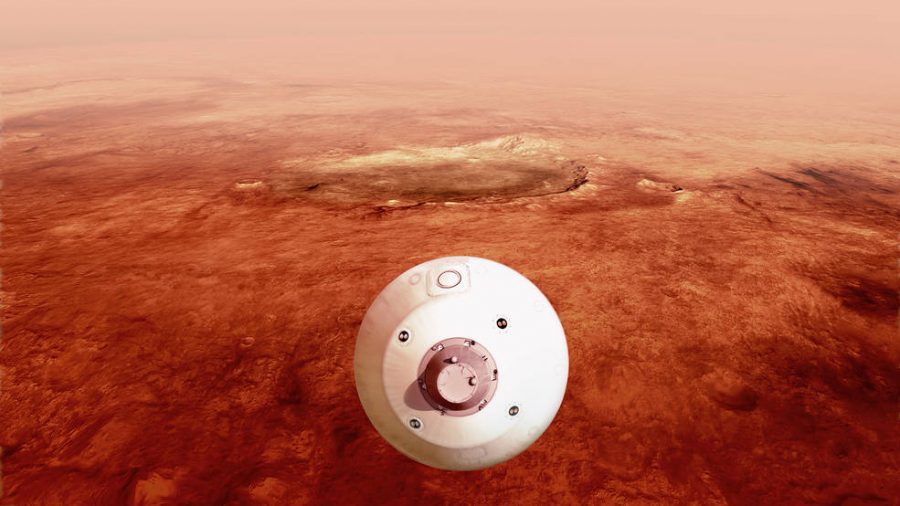NASA’s New Mars Rover Lands Successfully
NASA Perseverance rover plans to land on mars
February 23, 2021
NASA’s new Mars rover, Perseverance, has touched down on February 18th at 3:55 pm EST. Launched nearly 7 months ago, the rover was programmed to land in the Jezero Crater on Mars, where scientist have theorized that a large body of water was once located there billions of years ago.
One of the rover’s key objectives is to search for signs of ancient microbial life on the planet. “The rover will characterize the planet’s geology and past climate, pave the way for human exploration of the Red Planet, and will be the first mission to collect and cache Martian rock and sediment for later return to Earth,” a spokesperson posted on the NASA website. Unlike the Curiosity rover, instead of scanning materials and relaying the data back to earth, its drills can collect important samples of promising rocks and soil and stores them safely in a cache until they will be retrieved during future Mars missions. The rover also comes with its own drone-like helicopter to scan the Martian terrain from above.
According to NASA, “Perseverance is NASA’s most ambitious Mars rover mission yet, focused scientifically on finding out whether there was ever any life on Mars in the past,” said Thomas Zurbuchen, Associate Administrator for the Science Mission Directorate at NASA Headquarters in Washington. Zurbuchen added, “To answer this question, the landing team will have its hands full getting us to Jezero Crater – the most challenging Martian terrain ever targeted for a landing.” Traveling at around 12,100 mph (over 6 times faster than a bullet) The rover underwent a series of complicated stages for landing.
The first stage is called the Cruise Stage Separation which the mini helicopter detaches from the entry capsule of the shuttle.
The second stage, the Parachute Deployment, will have the capsule deploy its parachute at supersonic speed after entering the atmosphere.
About 20 seconds later, the Heat Shield Separation commences. The heat shield detaches to allow the rover to use its radar to determine how far it is from the ground.
The back portion of the capsule that is connected to the parachute detaches called The Back Shell Separation. The jetpack of the rover will then slow down its descent.
Finally Touchdown, the jetpack will lower a crane that the rover is attached to with nylon tethers called the sky crane maneuver, thus slowing descent from 12,100 mph to walking speed.
All of these steps must be done autonomously due to the long relay times between Mars and Earth- about 12 minutes long at light speed. One of Perseverance’s fist missions is to take pictures of the environment and send it back to earth. According to NASA’s press kit for the landing, “The Perseverance team will then take more than a month to thoroughly inspect the rover and load new flight software to prepare for its search for ancient life on Mars. During the same period, the Ingenuity Mars Helicopter team will be making sure their small but mighty robot is prepared for the first attempt at controlled, powered aerodynamic flight on another planet.” This Mars mission is a part of a larger NASA initiative known as the Artemis Lunar Exploration Plans that includes missions to the moon as a way to prepare for future manned Mars landings.

